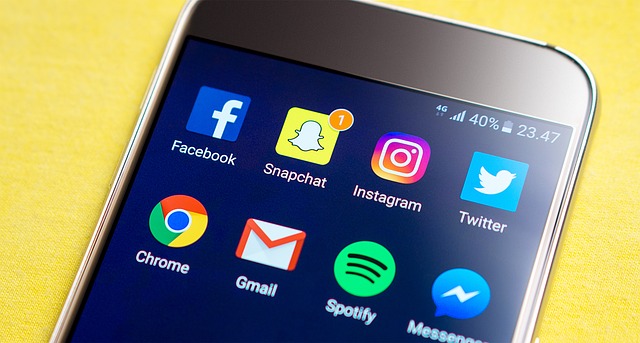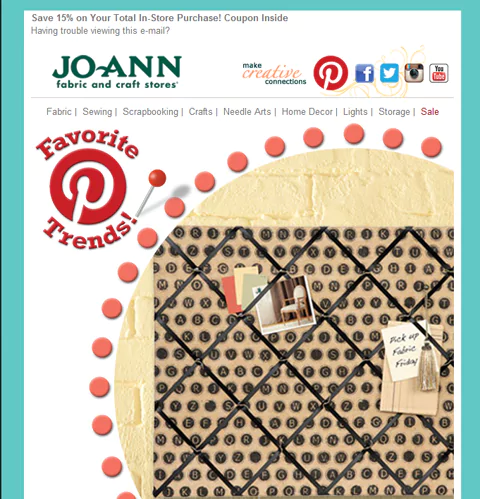
Marketing is meant to be a machine with all parts working toward the same goal.
In most marketing departments, the parts are meant to make up the whole; at least, that is the ideal. The reality is very different.
The reality is most marketing department processes and functions rarely support other pockets of activity. Take content, for example, the most time intensive marketing responsibility. Content should be an overarching umbrella that funnels into different purposes.
One piece of content should be adaptable and have multiple functionalities so it can be adapted to social media, email marketing, blogs, and more. In this way, content is not only dictating how other marketing arms are fleshed out, but the content is also bringing these different pockets together.
Instead, content tends to be scattered across the board. One thing is said on one platform and something else entirely somewhere else.
What’s shared on the blog, of course, often makes it to social media platforms — but not all social media platforms. First of all, content is not adapted to suit the style of each platform. What works on Facebook will not work on Instagram; and what works on Instagram is not going to cut it for Twitter.
Let’s look at content the other way around. In fact, let’s look at your biggest organic content generator: social media.

Filling the Social Media Follower Void
If you have an active social media presence on any platform — and you’re not pulling from the engagement and dialogue there — you’re missing out on some major opportunities. One of those opportunities is getting more people from your email marketing list to convert as new social media followers. This is particularly important if you have a strong email marketing subscriber list and a loyal following there — and are trying to build up your social media accounts.
The most under-utilized way to bridge the gap is to integrate social media into your email campaigns, particularly newsletters. If you have a hot Instagram or Twitter account, take some of the best high-traffic posts and link to them in your campaigns. If there was a dynamic Facebook post the generate a riveting dialogue with followers, then summarize that with a headline and an invitation to join the conversation on Facebook. The point is to tease your subscribers with linked-back images of the chats that are happening somewhere else so you can funnel them to your social platforms.
In fact, you can have an entire email campaign per week dedicated exclusively to social media chatter for the week. When it comes to social media, you want to keep this a weekly occurrence just because the news cycle changes so quickly. What’s relevant or hot today, may not be of interest to your followers next week, even if that social post is visually driven images from Instagram.

Cultivating Social Media Followers from Email Campaigns
The point is not to forget about one pocket while you’re working in another pocket.
For starters, it’s highly recommend to center one entire email campaign is centered on a call to action for social media. It should be well-designed, clean and organized, as you see with the two examples.
The one above for JoAnn Fabric and Craft Stores is a fantastic example of how to focus on your niche audience. At the top of the email campaign, as you would also share at the top of a website, they list all the social media platforms they’re on. They understand their demographic is women who are inspired to create and get crafty.
The best social media platform for that is Pinterest. If they were to focus on a second, maybe it would be Facebook and then Instagram. JoAnn’s chose to focus on Pinterest and paired it with a pinboard. There isn’t an excessive copy. The call to action is simply the pins, which they repeated in various graphic design elements throughout the email campaign.
The example below is Bed Bath & Beyond. They have a cheeky theme about “getting into the swing of it,” paired with value for each platform. The value isn’t also a thesis, it’s about pairing strong visuals that direct action with language that supports taking that action.
Interestingly, the email campaign weaves in elements of website design. The top two rows of categories mimic their website. This is smart. It reminds people what the brand is about but also is a non-verbal cue to shop.

Building on that, there are other ways to get email subscribers to show. Try including social media links in your email sign up form as well as your email confirmation form. Your subscriber’s welcome email can also be broken up into two separate campaigns, the latter of which focuses exclusively on social media. Have a second follow-up welcome email focus exclusively on social is smart if your email campaigns tend to be spaced out, allowing your subscribers to stay engaged in other ways in between campaigns.
Weaving in Your Brand Value
When integrating your social media teasers into your email campaigns, the key is to keep in mind brand value. In other words, think of communicating, “Here’s what you need and here’s why you need it.”
That is how you go about drumming up your value. Ask yourself what’s the one thing you offer on your social platforms that make them pop out? Going further, perhaps there are multiple types of value. You might get great community engagement on your Facebook page. Perhaps your Twitter page scoops up the hottest issues. Instagram might be where you curate the best finds across the visual platform and repost on your Instagram account. Maybe your Instagram is where you capture your brand’s culture.
The point is the value you have your social media accounts tends to be diverse, and each platform captures a different facet of your brand value. Now it’s time to bring that back home to your email campaigns.
It’s Always About the Numbers

Graph as seen on OptinMonster.
The people marketing higher-ups typically answer to are easily charmed by the appeal of social media. The engagement there is visible. The likes and the replies are visible, but that doesn’t mean they’re measurable in the same way you measure engagement on email marketing.
Think of it this way: 5,000 subscribers to your email subscriber list is not the same 5,000 subscribers on your Facebook or Twitter page. According to Stuart Marler from Retriever Digital, “If you have 2,000 Facebook fans usually only 2-5 people will see each post you publish.”
The level of engagement on social media is typically very minimal unless you’ve boosted the post. Then there’s the issue of boosting a post. While a boosted post gets you more traffic, likes, shares, and replies, etc., that engagement very typically isn’t driven by people who like or follow your business page. They’re often one-offs, there because you’ve paid for a sponsored post. It’s not an accurate level of reach or fanbase, especially when not compared to what you get on email marketing.
Let’s look at what you get when you post the same thing to social media, on a platform like Facebook, while also sending the post to your email subscribers. Thought leaders Ogilvy note that Facebook organic reaches an estimated 6% of a brand’s fanbase, whereas the average reach (open rate) for email is 22%. That is a huge discrepancy in numbers.
The point is this, the level of followers or subscribers is not equal to the level of engagement had based on that number alone. Think of it like this: you can have 5,000 contacts on your phone but who picks up the phone when you call? When it comes to social media, the same relative theory applies. It’s a question of who’s there versus who answers the call.
Coming back to the point, considering that you naturally have a higher rate of email marketing engagement, it’s smart marketing to drive that audience to social media. Not only do you want to make sure you are evening out the playing field with the same people accessing all platforms you’re present in, but you can also use your email subscribers to help boost social media engagement.
Going back to the drawing board, think of how you can use this information to create a bridge to connect social media to your email marketing campaigns. Considering summer is ahead of us and is typically a dry spell for email marketing, this is a great time to go back and pull the best of what you have on social media into your email campaigns.
In fact, a key theme during the summer could be to draw attention to the most pivotal conversations and shares on social media as one-off email campaigns that can be sent out daily. It would be curious to see how your numbers perform under this strategy, whether your social media followers go up and whether you’ve maybe even increased social engagement through this innovative way to think about your marketing platforms.
Give it a try, have fun with it, and let us know how it went for you!



